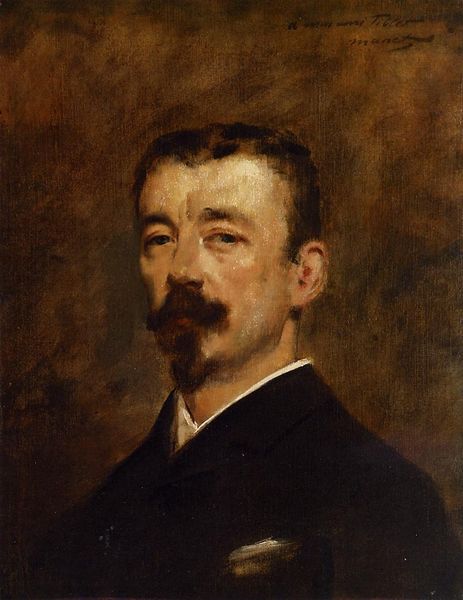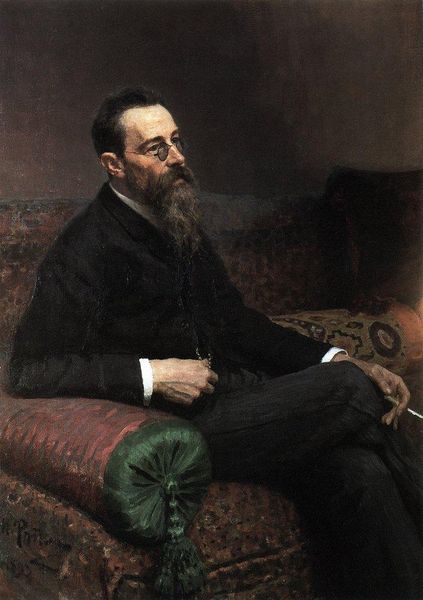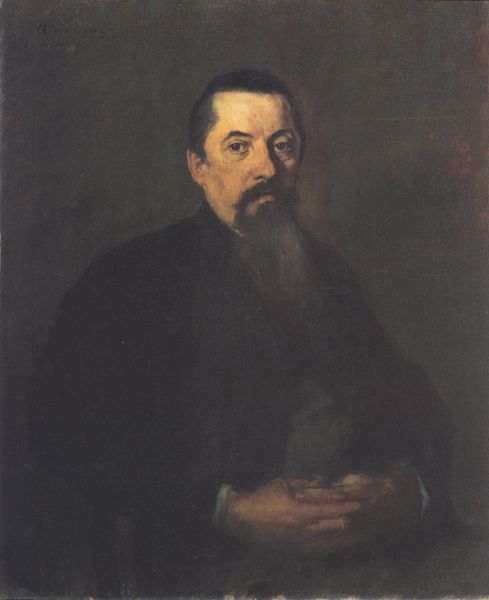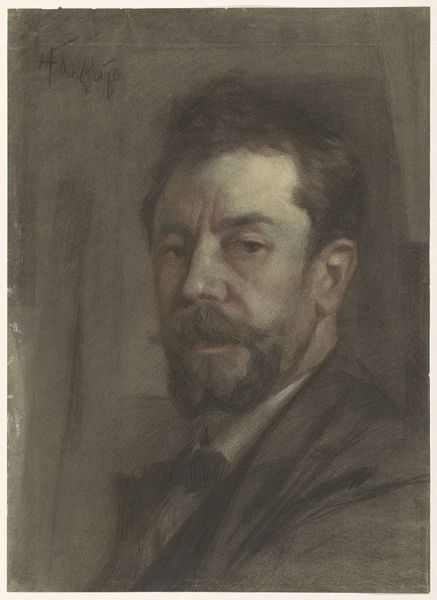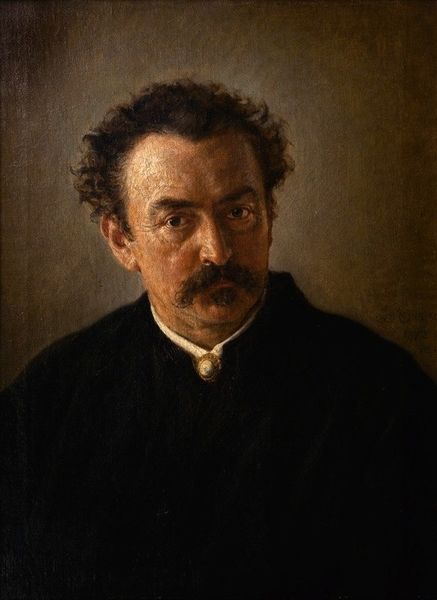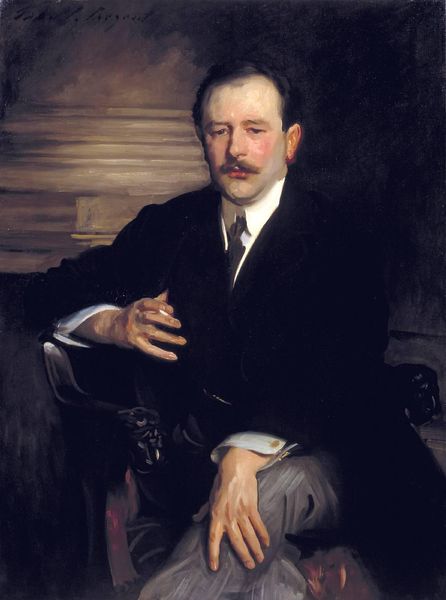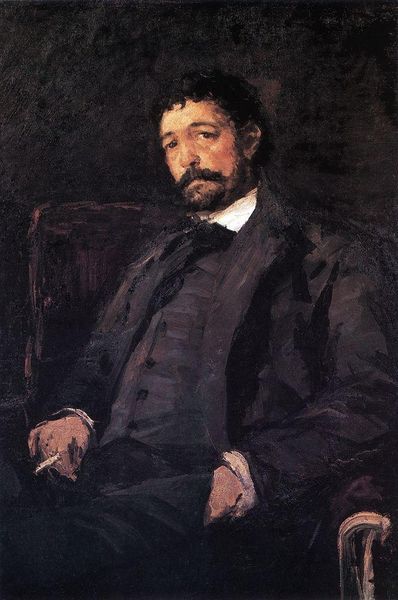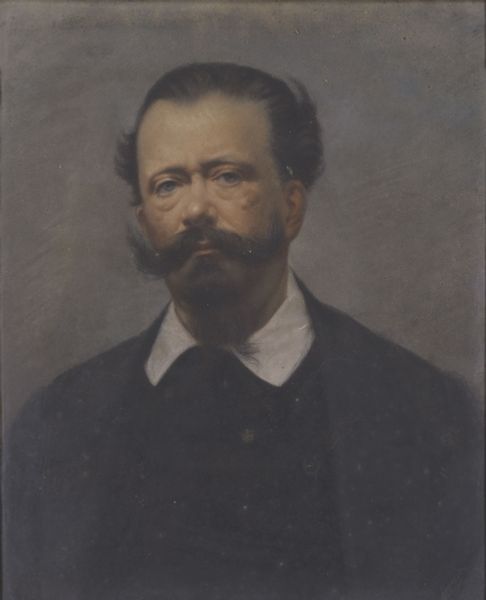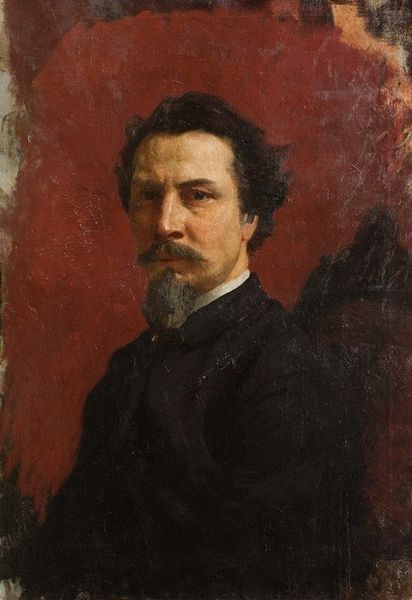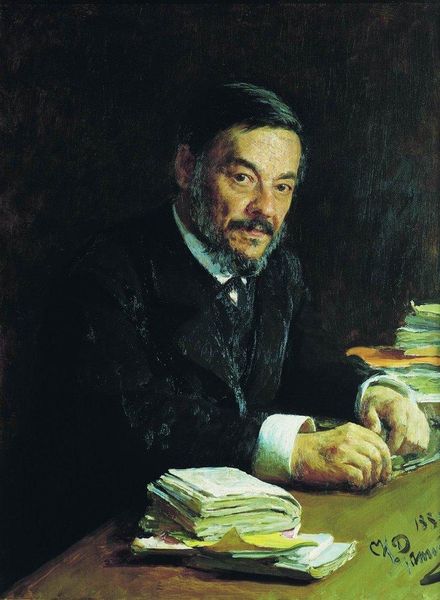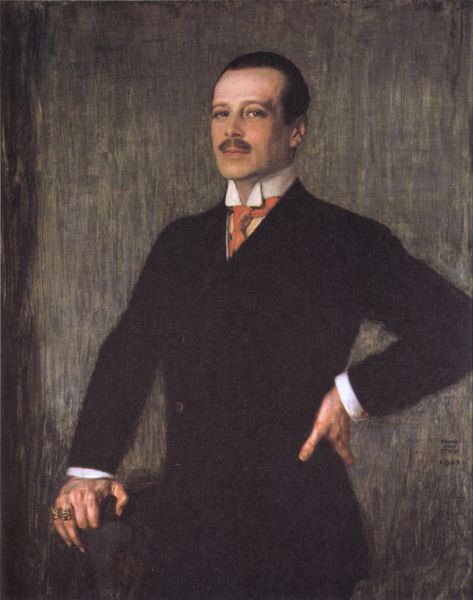
Portrait of Henry Ossawa Tanner 1897
0:00
0:00
thomaseakins
Hyde Collection Art Museum, Glens Falls, NY, US
painting, oil-paint
#
portrait
#
portrait image
#
portrait
#
painting
#
oil-paint
#
portrait reference
#
male-portraits
#
portrait head and shoulder
#
animal drawing portrait
#
portrait drawing
#
facial portrait
#
academic-art
#
portrait art
#
fine art portrait
#
realism
#
digital portrait
Copyright: Public domain
Curator: Let’s take a closer look at Thomas Eakins' "Portrait of Henry Ossawa Tanner," an oil painting created in 1897, and currently residing here at the Hyde Collection Art Museum. Editor: Tanner seems pensive, almost melancholic. It's that downward gaze, softened by the light catching his spectacles, creating a sense of intimate reflection. A beautifully somber, autumnal kind of feel to the whole piece, wouldn't you say? Curator: Indeed. It's worth noting that Eakins, while known for his unflinching realism, here captures not just Tanner's physical likeness, but hints at the inner life of a fellow artist who also navigated significant challenges of race and representation in the late 19th century. Editor: It is a quiet protest, perhaps? Tanner’s success abroad, away from the overt racism in the States, is whispered in that careful, refined posture. Do you get a sense of defiance in his calm expression? Curator: Defiance certainly resonates, but I see also the burden of representation, the weight of being one of the few prominent African American artists of the time. Eakins’ decision to portray him with such dignity challenged the prevailing racial stereotypes so pervasive in art and society. Editor: Ah, the double consciousness...beautifully, tragically rendered. That weight—I see it now, a sort of weary resolve in the set of his jaw, beneath the professorial beard. And that light! So Vermeer, a subtle way, perhaps, of elevating Tanner, connecting him to a canon that was so often exclusionary. Curator: Precisely. Eakins used his skill and status to provide Tanner with an artistic endorsement. A statement, even, about who deserved to be seen, recognized, and remembered. Editor: I like the ambiguity. Is he posing for his portrait or merely lost in thought and glimpsed by Eakins? That interplay feels modern somehow, very alive. Well, now I look at this portrait and see stories instead of simply artistry. Thank you for that perspective. Curator: My pleasure. Looking through a historical lens can often help to clarify some of what informs a piece, revealing its societal purpose or effect, both at the time it was made, and afterward.
Comments
No comments
Be the first to comment and join the conversation on the ultimate creative platform.

